Sweden is to be the first partner nation in the British Tempest programme to build a next-generation fighter jet.
The announcement of Sweden’s collaboration on the project is expected to be made later this month at the Royal International Air Tattoo (RIAT).
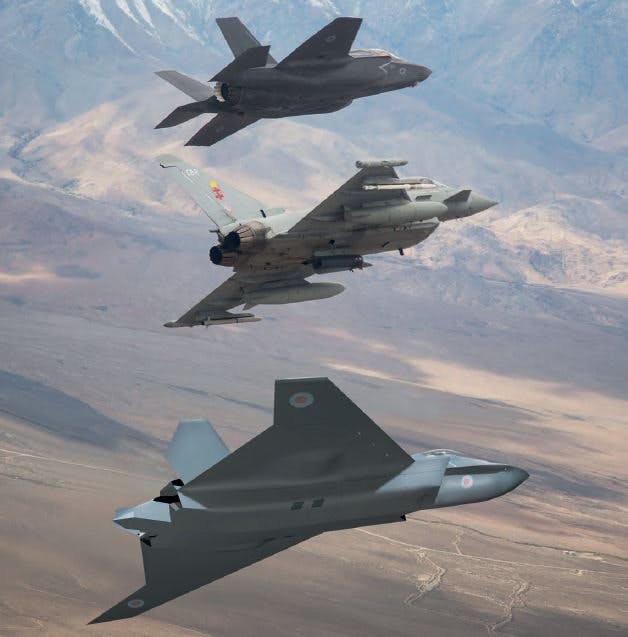
“Britain’s Team Tempest programme to build a new fighter jet has moved a step closer to getting into the air with Sweden poised to announce it has signed up as the project’s first international partner,” according to The Telegraph.
Tempest’s purpose is to explore the technologies and systems that could form a future combat air system.
According to a Commons Library briefing paper which provides a brief overview, the process is still at very early stages and is focused more on exploring and developing potential technologies.
It states that:
“Tempest was a fighter aircraft in World War Two, although the Strategy only uses this term in the context of ‘Team Tempest’ – it does not confirm this will be the name of whatever aircraft or system emerges.”
The companies involved have given some indications of the technologies and techniques they are looking at. Rolls Royce has talked of developing a future power system that drives not just the aircraft but provides a “step-change levels of electrical power (for the future systems on board)”.
BAE say that a future combat air system must be able to survive the most challenging combat environments meaning that payload-range, speed and manoeuvrability will be key.
“We expect that the system will be equipped with a range of sensors including radio frequency, active and passive electro-optical sensors and advanced electronic support measures to detect and intercept threats.”
The aircraft, say the defence giant, is likely to operate with kinetic and non-kinetic weapons.
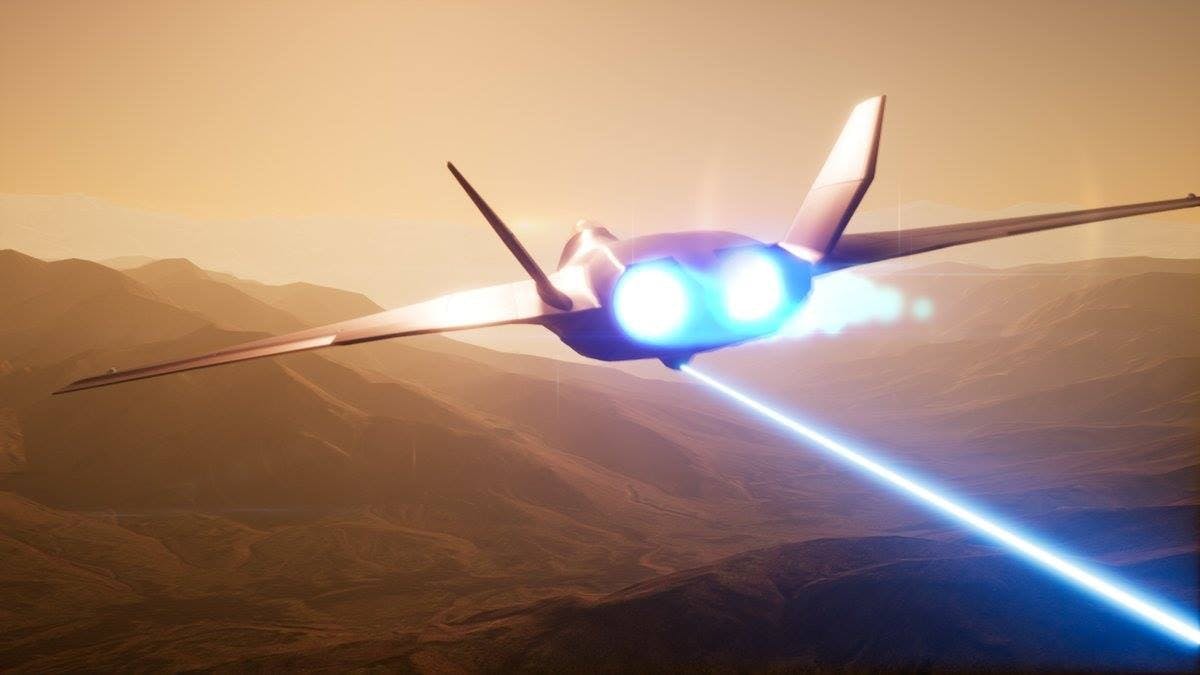
The integration of Laser Directed Energy Weapons for self-defence and use within visual range combat is also highly likely. The use of directed energy weapons on aircraft is becoming reality as the US Air Force will shortly begin testing a laser that will be mounted on an F-15.“We have got tests starting this summer and the flight tests next summer,” Jeff Stanley, deputy assistant secretary of the US Air Force for science, technology and engineering, told reporters.
“There are still some technical challenges that we have to overcome, mainly size, weight, power.”
The Pentagon last year awarded a $26 million contract to Lockheed Martin for a laser program called SHiELD (Self-protect High Energy Laser Demonstrator). The overall aim is to put a laser system on aircraft with an output of about 50 kw to test their ability against unmanned aircraft and missiles.

Another driver for the concept say BAE is that air forces of the future ‘will require a fighter system that is highly flexible and can be applied to a wide variety of military operations’, a multi-role aircraft then, which is not really all to different to most new aircraft today.
“Operators will have the ability to rapidly adapt the system to perform new functions or to change its performance. Depending on the mission, ‘role fit’ additions such as low observable conformal fuel tanks, weapons dispensers, air launched UAV dispensers, large modular sensors, long range oblique photography systems for reconnaissance and Laser Directed Energy Weapons could be available. Adaptability will be built into the system design, with systems architectures which support a ‘plug and play’ approach, easily integrating new algorithms and hardware.”
The system will also support ‘scalable autonomy’ say BAE, to provide a number of modes of unmanned operation and a range of pilot decisions aids when manned flight is being conducted.
This concept is known to most as ‘optionally manned’.

An optionally piloted vehicle is a hybrid between a conventional aircraft and an unmanned aerial vehicle, able to fly with or without a human crew on board the aircraft. The thinking is that, unimpeded by a human’s physiological limitations, an OPV is able to operate under more adverse conditions and/or for greater endurance times.
The USAF are also pursuing this with newer aircraft, notably the B-2 bomber replacement, the B-21. A document DODIG-2015-170, published last year named “Audit of the Acquisition of the Long Range Strike Bomber,” as well as other documents in a heavily redacted form, contain highly relevant official confirmations as to the aircraft’s baseline requirements.
The document clearly states that the B-21 will indeed be optionally manned as a core requirement.

Retaining on-board controls, an OPV can operate as a conventional aircraft during missions for which direct human control is preferred or desired as an immediate option.
Another trend being embraced by ‘Team Tempest’ is an ability deliver significant information advantage and mission effectiveness, the future combat air system will act as a ‘force multiplier’, inter operating with a wide range of other civil and military platforms and services across air, land, sea, space and cyber domains – as well as unmanned systems.


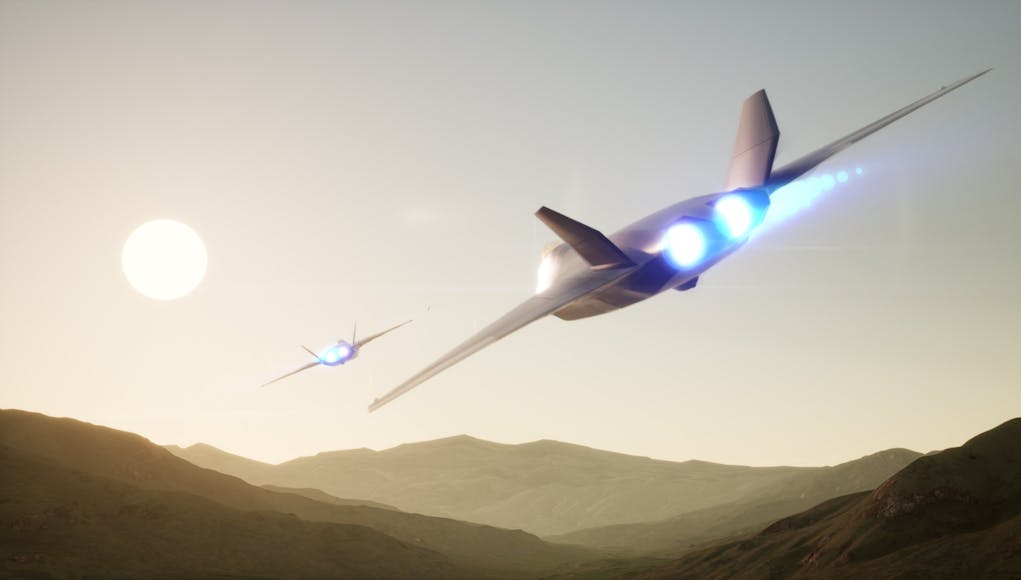
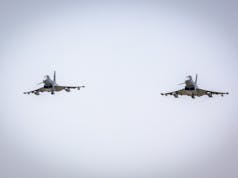




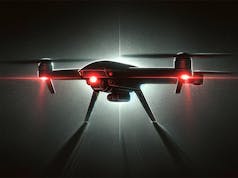


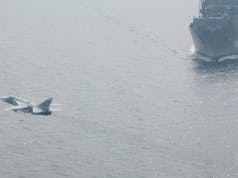
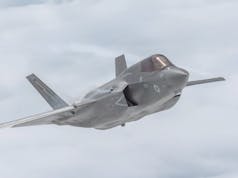

Great news. Sweden will be a very good partner on this.
Totally agree Sweden will make a great partner, but will they buy tempest jets in good numbers, I’m not sure.
Would it not make sense for us to sell off the remaining Tranche 1/2 Typhoons and invest in the Gripen E and F models until such time as Tempest arrives?
At almost half the cost of the F35A, and one would assume Typhoon, that would give us a tremendous amount of bang for our buck.
“Gripen’s overall cost of a fleet of 150 NG Gripens for more than 40 years is approximately $22bn. Which when compared to the F-35 that the USA and UK are purchasing is significantly cheaper at 48% of the cost of a fleet of 65 F-35As.
So effectively a country could purchase a great deal more fighters and still save money over the F-35.
Ultimately unless the country is requiring some unique and staggeringly expensive stealth technology (which is the technological focus of the new breed of top fighters) then the Gripen is an extremely good package for the money compared to what else is available”
The E model would clearly work well in the air policing role and also ground attack too saving airframe hours on our Tranche 3 airframes.
“Gripen includes some unique tricks in order to maintain an advantage and keep the ability of the vehicle high, without compromising the intended low price point of the vehicle. AESA radars have changed aerial combat, offering huge improvements in range, resolution, fast scanning capabilities, stealth and reliability for radar systems.
But the system does have limitations in its rather narrow field of view. Saab has used a clever spinning ‘repositioner’ in the nose of the jet which allows the angle to be increased significantly.
This allows the Gripen the ability to take a shot from beyond visual range, and then turn 90 degrees in avoidance tactics, while still providing mid-course updates for the missile fired and keeping situational awareness high in mid-combat.
With new missiles that have extreme ranges, like MBDA’s Meteor, a Gripen NG could fire at enemy fighters at extreme range and then effectively hide from enemy radar and infrared tracking systems used on other types of fighters, while still guiding its missiles.
This development, though relatively minor in cost, provides a major benefit to the new series of Gripens and is one of the ways that the Gripen can maintain relevancy when compared with its peers.”
The F (two-seat model) could be used in the EW environment similar to that of the Growler, as well as controlling drones as I have mentioned on previous occasions.
https://www.janes.com/article/89293/aesa-technology-could-migrate-to-electronic-warfare-equipment
I think this is a golden opportunity not to be missed particularly when you consider that the EJ200 (thrust vectored) engine has already been factored into the design, and possibly even the next generation with 25% additional thrust plus, conformal fuel tanks and Saab’s RBS 15 Gungnir Next-Generation air-launched Anti-Ship Missile or the NSM/JSM Missile.
“Almost any weapon can be integrated, giving Gripen E/F very high weapon flexibility. This is partly due to the flexible avionic architecture. Because of its well-documented ease of new weapon integration, Gripen served as the main test platform for Meteor, the latest long range air to air missile.”
https://saab.com/air/gripen-fighter-system/gripen/gripen-ef/
As good an aircraft that the Gripen E is, we will never buy it over the F35. One, we build 15-20% of every single F35, and two, the F35 provides that first day of war capability. The combination of F35 and Typhoon will make for a deadly fighter mix, even in small numbers. And the E scan radar coming for the Typhoon plus further enhancements will put the Typhoon well ahead of the Gripen. It’s a nice idea, but it wont happen.
@Robert Blay: I understand the point you’re making, and for the carriers, the F-35 is the only option currently available. However, my personal belief is the first day of any conflict will be carried out by autonomous drones like Tarnis using smart standoff weapons like these.
And with 20 hardpoints on offer for the cost of 1x F-35A….
Radar technology is catching up quickly!
https://www.youtube.com/watch?v=fatOaut82Xk
Id agree, day 1 conflict, I would expect it to be stand off weapons and autonomous vehicles. You don’t put troops and 100mill a pop aircraft in harms way until you have softened the enemy up a bit.
Id have much rather seen us bolster our Typhoons and purchase Gripen over the massive amount of the money being thrown into the F35 black hole on a device that as yet hasn’t really earned its $ value. I get that its integral to the Lizzie and Chuckles, but surely having a proper setup like the US carriers would have made it far more usable with more scope for aircraft etc.. we seem to have shoe horned ourselves into F35 and the massive cost that goes with it.
But if we bought the Gripen, and all the support and maintenance, training costs,ect plus another aircraft type for the carriers, F18 super Hornet or Rafale plus the eye watering cost of fitting cats and traps to the carriers; it would cost far more then a fleet of F35B’s, and we would have a less capable fleet of aircraft.
You’re right, maybe I wasn’t clear, my point was we “have already” shoe horned ourselves into a road that we are now stuck with, with zero alternatives to it. If we had a little forethought and planning we could have gone with a proper carrier (yes at a higher cost) but would have opened up loads of options at a fraction of the cost for airframes serving on the carrier ?
I just worry we have now got ourselves into the “money pit” of carrier air group roads.
I see your point, but the F35B and the QE class represents the most capable bang for our buck, The F35C would give slightly more range but that’s about it, anything else would be less capable. And even though we do build quite a chunk of the Gripen, its overall worth to the treasury is way less then the F35 program. At the end of the day, the QE is a proper carrier ,and the capability of its aircraft is more important then how they take off and land. Though I must admit, 3 sqns worth of Gripens to replace the Jaguar back in the day at Coltishall would have been nice ?
@MattW – “If we had a little forethought and planning we could have gone with a proper carrier (yes at a higher cost)”
Well firstly we HAVE two ‘proper carriers’ with one that is working as planned and has achieved over 200 F-35 launches and recoveries according to Westlant18 reports.
Then there is your slightly throw away statement about cost. EMALS simply does not work even now after $ Bns have been, and are being, thrown at it. Its why we, in 2010, made the rather sensible decision to keep with ‘Plan A’ and buy the F-35B rather than the F-35C given a) no delivery dates could be provided, no fianl costs could be provided and no guarantees could be provided either by General Atomics for EMALS or Converteam for EMCATS. We quite simply built two state of the art supercarriers for $10 Bn that will work as designed. Compare that to US Navy’s Gerald R Ford that has (to date) cost $18 Bn and still does not work as planned.
However you cut it no matter what the ‘savings’ made on chepaer and less capable aircraft they would not cover the costs of EMALS / EMCATS
I have a sneaking suspicion we may have re-written some of the rules on carrier design and operation by enabling the technologies of the aircraft rather than have something bolted on to a ship.
What black hole? Some 15% (more?) of every bit of every F35 is built by Britain. Given 4000 built that is 600 planes equivalent .
But almost a third of Gripens are British made parts. I agree we won’t choose Gripens over F35 we have to much invested into the F35 program.
We build about 35% of every Gripen
This would seem to be good news, if it actually happens. The Swedes have been punching above their weight for decades when it comes to producing combat aircraft.
What brilliant news, now I have more faith this programme will progress beyond a fibreglass model at an airshow. Let us hope more projects can be shared with our Swedish friends?
Very pleased with this news, the swedes are a credible partner and the Gripen is an excellent product that I personally think should replace our hawk training and agressor fleets.
We have always been part of EU projects where the other countries over commit to gain work share and then pull numbers at a later date, or even refuse to play unless their engines or key systems are chosen.
The open architecture of the gripen, allied to the uks engine and aircraft design capability makes a potent mix and will probably mean we start with a decent order level of circa 200 -250 frames between Sweden and UK.
More:
https://www.defensenews.com/global/europe/2019/07/07/sweden-to-join-british-tempest-next-gen-fighter-push/
Cheers!
Good news but we still need bigger partners. Sweden will not order that many airframes maybe 60 to replace the Gripen E’s they have on order now. UK if its replaceing the Typhoon 1 for 1 we would order around 160. May be another 50-60 to replace some of the F35s, we’d still need the B version for the carriers.
So we need another partner or two to get the numbers up. Japan is a good candidate would probably order 200 over time. Italy would also order a decent number and would take the total number ordered to near 600 airframes which would make the project viable without the need to have France and German involvement.
Canada S Korea Australia Singapore… All potential partners …..usual MEast suspects
Taiwan? Would probably love to buy 80 but would the risk be too high
Agreed Expat,
UK, Sweeden, Italy, and Japan would get this programme off to the perfect start.
All Tier 1 partners? I’m sure Australia, Norway, and Canada would be interested parties too.
It’s time the UK did things a little bit differently, rather than relying on our trusted friends France and Germany!
True, though Sweden is a good start.
We should definitely order 200 or more air frames for ourselves. Once Tempest comes into service I’d say transfer all F35s to the FAA, gives the Navy a hefty air arm then and the RAF can have 200 Tempest plus drones.
Italy and/or Japan would be good as partners, too.
Italy are likely I’d say, with a think tank recently recommending they join Team Tempest (even if it did suggest merging it with the European FCAS venture) and Leonardo already being on board.
https://www.defensenews.com/global/europe/2019/03/22/think-tank-to-italy-join-uk-tempest-program-then-try-to-merge-it-with-franco-german-effort/
I wish we could have a future attack helicopter program announced, we british should build and export more helicopters in general.
I’m so glad Britain is thinking ahead with the tempest program for a change, it’s so easy to sit back and just buy foreign built aircraft like most of the world does.
How many airframes (E/F) would need to be sold to keep the same unit price while including the uprated thrust vectored engine (EJ2x0) from RR plus conformal fuel tanks?
“The new engine plan to increase the output 30% more power compared to the original EJ200. The engine will have dry thrust of around 78 kN (or 17,500 lbf) with a reheated output of around 120 kN (or 27,000 lbf).
Is this the Swedish government or Saab? From what i have read it’s unclear and it seems to be Saab who is onboard, however, like Leonardo, they are suppliers, they invoice they don’t buy the planes.
Also, Sweden tends to favor single engine planes to keep them affordable, and it seems that Tempest is planned to be a twin engine, or is a single engine version in planning?
I guess we will have to wait for clarification at RIAT in a couple of weeks for an offical announcement.
Sweden has been happy to be neutral with basic point defence. Russian behaviour recently to them and other independant states in Baltic and region has them worried. Also tempest could also become a family of solutions built around common sensor suites, technologies and avionics…. But being presented on alternate configurations.
Is ‘optionally manned’ a form of ‘fitted for but not with’ thinking? You have to install all the stuff needed to have a squishy human onboard then don’t install it but still have all that space and money allocated just in case.
If the thing is going to be flown remotely then so be it, build to that specification and save weight/ space/ time/ money. If it will be crewed then likewise don’t waste the time figuring out how to fly it as a big expensive drone.
Nobody really knows yet, optionally manned hasn’t been done by anyone before (as far as I’m aware anyway) but has been discussed. Most likely outcome is that all the hardware is preinstalled for both, and you either put a human in or turn the drone software on at the start of the mission. The idea is that you can use both options depending on which is better suited to the mission. Sending it on an 8 hour strike mission against a terrorist compound – use it as a drone. Sending it up to dogfight the Russians – put a person in.
Hmm… I do not see the point of building a multibillion programme for a 100mil plus remote/ autonomous aircraft to send it off on a suicide mission because it’s safer than sending a manned one. Would it not be simpler and cheaper to send a proper purpose built drone?? Smaller one, thus even more stealthy? More agile and capable of say more performance and withstand g force than a pilot?
At what point in a technological race do you fire the starting gun? How soon does the end product come outdated? “Tempest” might be simply a programme, an environment. Different platforms might be the result. And/or there is a core structure which is the basis of them. And of course the radar and sensors and weapons and drones to go with it.
Great News!
Let’s get this venture off the ground!!
As Leonardo’s are part of the UK side of things I imaging the Italians will soon be onside as well as they tend to support their defence industry quite well.
Well if they do they will be a much more equal member than if they are ‘allowed’ into the other option which is why the Italians are talking about joining this then combining it with the Franco German effort to gain influence while reducing the overall costs. Plus the Italians and French are presently barely talking politically. Not sure that these two projects will combine however the French will want control as usual and Britain in its post Brexit ‘dreamland’ is hardly going look good being in such an EUROPEAN dominated mix though so much depends on Govt at the time, conditions and above all what non European partners might jump on board.
This partnership could certainly help make the Italians formally commit and raise far more interest amongst others once it’s seen as a true collaboration. Thanks to F35 Bae certainly has a CV few non US companies can get close to on an aircraft of this nature so that can only help too.
This is good news Sweden is a good collaborative partner (not like the French). I’m sure that Italy will join as a formal partner too (given they are annoyed at the German’s and French for destroying their banking system). We just need a couple of more partners for instance Canada and Australia. The UK should offer up collaboration with these three countries (Italy, Canada and Australia).
During the history, Sweden has always been a loyal friend to UK. A better friend than United States & America!